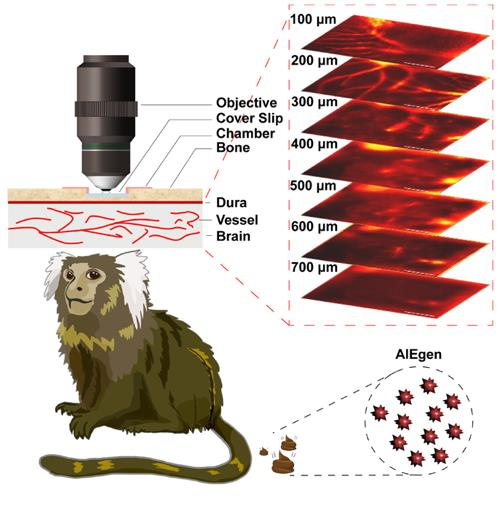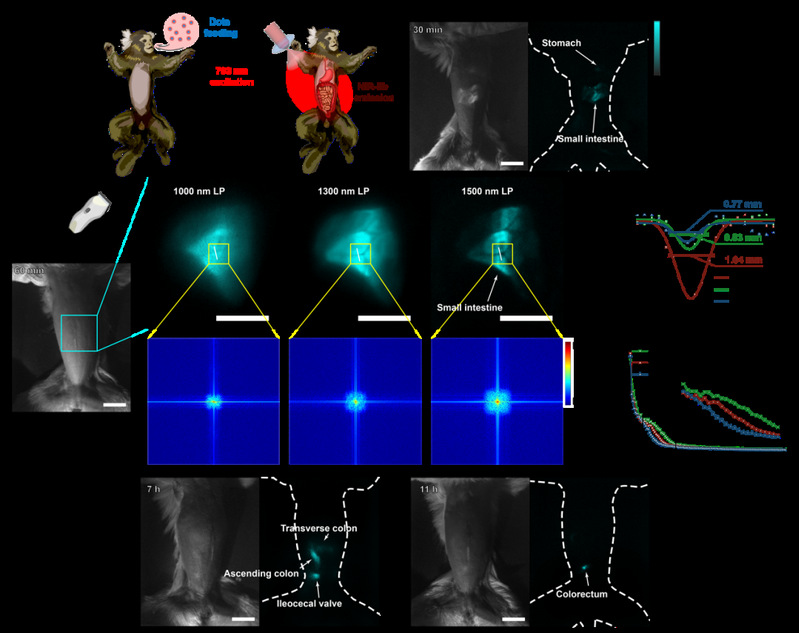Superb reliability and biocompatibility equip aggregation‐induced emission (AIE) dots with tremendous potential for fluorescence bioimaging. However, there is still a chronic lack of design instructions of excretable and bright AIE emitters. Here, a kind of PEGylated AIE (OTPA‐BBT) dots with strong absorption and extremely high second near‐infrared region (NIR‐II) PLQY of 13.6% is designed, and a long‐aliphatic‐chain design blueprint contributing to their excretion from an animal's body is proposed. Assisted by the OTPA‐BBT dots with bright fluorescence beyond 1100 nm and even 1500 nm (NIR‐IIb), large‐depth cerebral vasculature (beyond 600 µm) as well as real‐time blood flow are monitored through a thinned skull, and noninvasive NIR‐IIb imaging with rich high‐spatial‐frequency information gives a precise presentation of gastrointestinal tract in marmosets. Importantly, after intravenous or oral administration, the definite excretion of OTPA‐BBT dots from the body is demonstrated, which provides influential evidence of biosafety.

NIR‐II fluorescence microscopy image of brain vasculature.
NIR‐IIb fluorescence noninvasive gastrointestinal imaging with high spatial‐frequency.
biorxiv link:
https://doi.org/10.1101/2020.05.26.113316
article link:
https://onlinelibrary.wiley.com/doi/10.1002/adma.202008123

